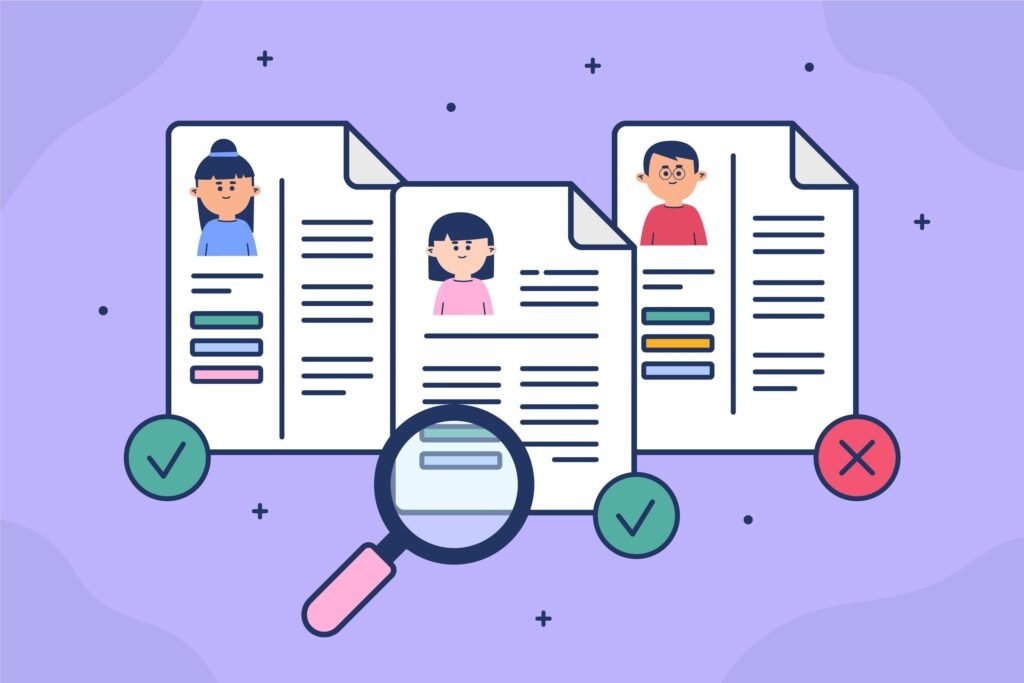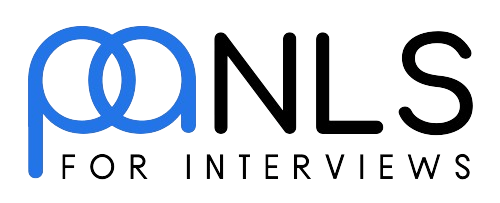Difference Between Job Description and Specification: Why Understanding Both is Crucial for Effective Hiring

If you’re trying to understand the difference between job description and specification, you’re in the right place. These two critical components of the hiring process are often misunderstood, but mastering them is key to hiring smarter, faster, and more accurately.
In today’s fast-paced recruitment environment, employers face constant pressure to attract, assess, and retain top talent efficiently. Without clear and structured hiring documents, this becomes an uphill battle. The difference between job description and specification is essential to grasp because it forms the foundation of a strategic and successful recruitment process. A job description explains what the role entails, while a job specification details who is best suited for the job.
This guide will break down each document in detail, explain their differences, explore real-world examples, share common mistakes, and show how platforms like Panls.ai can help optimize technical hiring using both. Understanding the difference between job description and specification can make or break your next hire.
What is a Job Description?
A job description is a detailed summary of a role within an organization. It communicates the tasks, responsibilities, reporting structure, work conditions, and objectives of a particular position. It is typically written by HR professionals or hiring managers and serves multiple purposes—from writing job ads to aligning internal expectations.
Understanding the difference between job description and specification begins with recognizing that a job description speaks directly to what the organization needs done.
Key elements of a job description include:
- The job title and level (e.g.,backend developer skills)
- Department or team the role belongs to
- Purpose of the role within the company
- Day-to-day responsibilities
- Key performance expectations
- Tools, software, or platforms required for the job (Consider differences like JPA vs Hibernate)
- Working conditions (remote, hybrid, full-time, etc.)
- Reporting structure and stakeholders
Example (Frontend Developer):
- Title: Frontend Developer
- Department: Engineering
- Summary: Responsible for developing user-friendly interfaces using React and Next.js.
- Responsibilities:
- Write clean, scalable code
- Collaborate with designers and backend developers
- Ensure cross-browser and cross-device compatibility
- Maintain component libraries
- Write clean, scalable code
A clear job description makes it easier for candidates to self-assess their fit, and it also ensures internal teams are aligned on what success looks like in the role. But to truly understand the difference between job description and specification, we must also define the latter.
What is a Job Specification?
A job specification outlines the qualifications, skills, experience, and traits that a candidate must have to be successful in a given role. While the job description tells you what the job is, the job specification defines who is best suited to do it.
This distinction is crucial when discussing the difference between job description and specification, as one focuses on the position and the other on the person filling it.
Key elements of a job specification include:
- Educational background (degrees, certifications, specializations)
- Required technical skills or proficiencies
- Years and type of professional experience
- Industry-specific knowledge or exposure
- Soft skills such as communication, adaptability, leadership
- Preferred behavioral traits and work ethic
- Physical or mental requirements, if any (e.g., ability to lift 25 lbs., night shift availability)
Example (Software Developer Specification):
- Education: Bachelor’s degree in Computer Science or related field
- Experience: 3+ years in backend development
- Technical Skills:
- Proficiency in Python, JavaScript, SQL
- Knowledge of REST APIs and cloud services (AWS/GCP)
- Proficiency in Python, JavaScript, SQL
- Soft Skills:
- Strong problem-solving ability
- Excellent verbal and written communication
- Team player and self-starter
- Strong problem-solving ability
When hiring, the difference between job description and specification ensures you know both the role requirements and the ideal candidate profile—essential to getting the right people in the right roles.
Key Differences Between Job Description and Job Specification
It’s easy to confuse the two terms, but the difference between job description and specification is both practical and conceptual. Both documents are complementary, but they serve distinct purposes in hiring.
Here’s how they differ:
- Purpose:
- Job Description: Explains the role’s duties and responsibilities
- Job Specification: Details the ideal candidate’s qualifications
- Job Description: Explains the role’s duties and responsibilities
- Content Focus:
- Job Description: Work-related tasks and expectations
- Job Specification: Candidate’s attributes, skills, and experience
- Job Description: Work-related tasks and expectations
- Audience:
- Job Description: Candidates, recruiters, team members
- Job Specification: Recruiters, HR professionals, interviewers
- Job Description: Candidates, recruiters, team members
- Use in Hiring:
- Job Description: Used in job postings and role alignment
- Job Specification: Used in screening, interviewing, and shortlisting
- Job Description: Used in job postings and role alignment
- Document Type:
- Job Description: Role-centric
- Job Specification: Candidate-centric
- Job Description: Role-centric
By clearly understanding the difference between job description and specification, companies can improve alignment between hiring managers and recruiters, reduce miscommunication, and enhance the overall quality of candidates.
Why Both Documents Matter in Modern Recruitment
In a high-stakes hiring environment, using only one of these documents leads to errors and missed opportunities. Companies that fully understand the difference between job description and specification know that both documents serve different, yet equally important, purposes.
Why they matter:
- Improved Job Clarity: Candidates get a better understanding of what’s expected and whether they are qualified.
- Faster Screening: Recruiters can quickly match profiles based on the job specification.
- Structured Interviews: Interviewers align their questions with the job’s technical and behavioral expectations. Based on precise interview format
- Reduced Attrition: When candidates know both the role and its expectations, they’re more likely to stay.
- Better Cultural Fit: Soft skills and personality traits in specifications help assess alignment with company values.
Without understanding the difference between job description and specification, many companies either under-communicate or overgeneralize, which often results in poor hires and high turnover.
Common Mistakes Employers Make
Many employers unknowingly blur the lines between job descriptions and specifications. Misusing or combining them can lead to vague job ads, irrelevant applications, and wasted time.
Common mistakes:
- Using only one combined document instead of separate ones
- Overloading job descriptions with too much company jargon
- Writing job specifications that are too generic or unrealistic
- Failing to include soft skills or cultural expectations
- Not updating job descriptions or specifications as roles evolve
- Ignoring input from team leads or technical experts
Understanding the difference between job description and specification helps eliminate these errors and brings more precision into your hiring process.
Best Practices to Create Job Descriptions and Specifications
Creating effective and clear hiring documents takes research, input from stakeholders, and a commitment to clarity. Both documents should be based on real data, actual team needs, and future growth potential.
Best practices for job descriptions:
- Use concise, actionable language
- Avoid vague buzzwords
- Include specific deliverables or KPIs
- Tailor each description to the unique role
Best practices for job specifications:
- Clearly separate essential and preferred qualifications
- Consult with team leads to define real success indicators
- Highlight personality traits, not just technical skills
- Keep the focus on must-have competencies
If you understand the difference between job description and specification, you’ll be able to craft documents that are not just compliant—but competitive.
How Panls.ai Transforms Your Hiring Process
Hiring is more complex than ever, especially for technical roles. Panls.ai, an Interview-as-a-Service (IAAS) platform, helps organizations streamline technical hiring using expert interviewers, structured evaluations, and AI-backed scheduling.
With Panls.ai, you can:
- Upload detailed job descriptions to match the right interviewers
- Align interview formats with job specifications
- Ensure technical questions map directly to required skills
- Collect detailed performance analytics from structured interviews
- Reduce time-to-hire without compromising on quality
When you truly understand the difference between job description and specification, you can take full advantage of Panls.ai’s ability to connect role clarity with interview precision.
Ready to optimize your technical hiring process? Let Panls.ai take over your technical interviews while you focus on building great teams. With role-based expert interviewers and structured evaluations, you’ll cut hiring time in half—without sacrificing quality.
Visit Panls.ai and book your demo today.
Conclusion
The difference between job description and specification is not just a theoretical concept—it’s a practical hiring strategy. Each serves a unique purpose, and both are essential for attracting, assessing, and securing the right talent. When used together, they create a roadmap for effective, repeatable, and scalable hiring.
For hiring managers, recruiters, and HR teams, recognizing the difference between job description and specification is the first step to improving recruitment outcomes and building stronger, more aligned teams.
Frequently Asked Questions
A job description outlines what the job involves, while a job specification defines the ideal candidate for that job.
They improve hiring accuracy, ensure better candidate fit, and help structure the interview process.
Typically, hiring managers and HR professionals collaborate to create these documents.
It’s possible, but separating them ensures clarity and more targeted communication.
At least annually, or whenever there’s a major change in job responsibilities or team structure.
Yes, Panls.ai aligns interviewers and assessments directly with job specifications for better outcomes.
Yes, soft skills such as communication, leadership, and adaptability are crucial elements of a job specification.
It enables interviewers to ask more relevant questions and assess candidates more accurately based on clear criteria.
